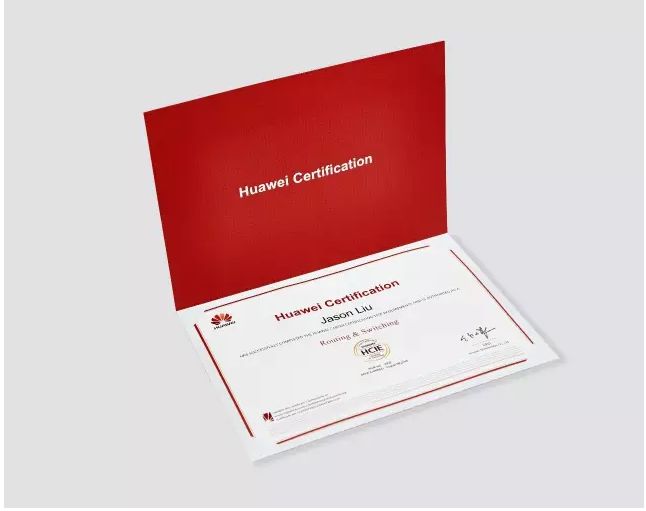编辑:银河教育时间:2019-10-27 07:50:01来源:
认证概述:
HCIE-R&S认证定位于大中型复杂网络的构建、优化和管理。
HCIE-R&S认证包括但不限于:不同网络和各种路由器交换机之间的互联,复杂连接问题的解决,使用技术解决方案提高带宽、缩短相应时间、最大限度地提高性能、加强安全性和支持全球应用,复杂网络的故障排除。
通过HCIE-R&S认证,将证明您对大中型复杂网络有全面深入的了解,掌握大中型复杂网络的技术,并具备独立设计各种复杂网络以及使用华为路由交换(数通)设备实施设计的能力。
拥有通过HCIE-R&S认证的工程师,意味着企业有能力独立搭建完整的大中型复杂网络,将企业中所需的语音、无线、云、安全和存储全面地集成到网络之中,并且能满足各种应用对网络的使用需求,能够提供完整的故障排除能力,能根据企业和网络技术的发展规划企业网络的发展,并提供高安全性、可用性和可靠性。

培训大纲:
H12-261 HCIE-R&S
2.1 Layer 2 Technologies
2.1.1 STP
1.STP
2.RSTP
3.MSTP
4.Loop guard
5.Root guard
6.BPDU guard
7.TC-BPDU attack guard
2.1.2 VLAN and GVRP
1.Access port
2.Trunk port
3.Hybrid port
4.QinQ
5.Vlan Aggregation
6.Mux Vlan
7.Voice vlan
8.GARP
9.GVRP
2.1.3 Transparent bridge
1.Local Bridging
2.Remote Bridging
3.Integrated Bridging and Routing
4.VLAN ID Transparent Transmission
2.1.4 Link Aggregation, Eth-Trunk and IP-Trunk, Load-balance, LACP
1.Link Aggregation
2.LACP
2.1.5 Ethernet technologies
1.Speed and duplex
2.Ethernet, Fast Ethernet, and Gigabit Ethernet
3.Auto MDI/MDIX
4.Auto negotiation
5.Storm control
6.Unicast flooding control
2.1.6 HVRP
2.1.7 Smart link
2.1.8 DLDP
2.1.9 Switched Port Analyzer (port-mirroring)
2.1.10 Frame Relay
1.LMI
2.Traffic shaping
3.Full mesh
4.Hub and spoke
5.DE
2.1.11 HDLC and PPP
2.1.12 PPPoE and PPPoA
2.2 IPv4
2.2.1 IPv4 addressing, subnetting, and VLSM
2.2.2 IPv4 tunneling and GRE
2.2.3 IPv4 RIP version 1/2
2.2.4 IPv4 OSPF
1.Standard OSPF areas
2.Stub area
3.Totally stubby area
4.NSSA
5.Totally NSSA
6.LSA types
7.Adjacency on a point-to-point and on a multi-access network
8.Virtual-Link
9.LSA Filter
10.OSPF graceful restart
11.Stub Router
12.OSPF Authentication
2.2.5 IPv4 IS-IS
1.NSAP
2.IS-IS Link-state packets
3.IS-IS area type
4.IS-IS circuit type
5.IS-IS TLV
6.IS-IS DIS and Pseudo node
7.IS-IS SPF
8.IS-IS LSP
9.IS-IS Metric
10.IS-IS Route Leaking
11.IS-IS RPC
12.IS-IS Graceful Restart
13.IS-IS LDP Synchronization
14.IS-IS Authentication
2.2.6 IPv4 BGP
1.IBGP and EBGP
2.BGP attributes
3.BGP synchronization
4.BGP routes Summarization
5.Route Dampening
6.BGP route reflector
7.BGP confederation
8.BGP Community
9.BGP Peer Groups
10.BGP Graceful Restart
11.BGP Security
12.Principles of Route Selection
2.2.7 Route Control
1.Filtering
2.IP Prefix list
3.Route Import(redistribution)
4.Route policy
5.Summarization
6.Preference
7.Other advanced features
2.3 IPv6
2.3.1 IP version 6 addressing and different addressing types
2.3.2 IPv6 neighbor discovery
2.3.3 IPv6 functionality protocols
2.3.4 Tunneling techniques
2.3.5 RIPng
2.3.6 OSPF version 3
2.3.7 MP BGP
2.3.8 Route Control
2.4 MPLS VPN
2.4.1 MPLS
1.MPLS network component (P, PE, CE)
2.MPLS label format
3.MPLS label encapsulation
4.MPLS label stack
5.MPLS label operation
6.Forwarding Equivalence Class
7.LDP
8.Label advisement model
9.MPLS LDP—Local Label Allocation Filtering
10.MPLS LDP Inbound/outbound Label Binding Filtering
2.4.2 MPLS Layer 3 VPN
1.MP-IBGP VPNv4 peering
2.VPN-instance
3.Route Distinguisher
4.Route Target
5.Route Target import/export
6.PE-CE–Dynamic Routes
7.PE-CE–Static Routes
8.Redistributing PE-CE routes into VPNv4
9.Redistributing VPN4 routes into PE-CE routing table
10.MPLS VPN Multicast
11.MCE
2.5 IP Multicast
2.5.1 Multicast distribution tree
2.5.2 Multicast forwarding
2.5.3 Multicast RPF
2.5.4 Multicast Administrative Boundaries
2.5.5 PIM dense mode
2.5.6 PIM sparse mode
2.5.7 IGMP
2.5.8 IGMP Snooping
2.5.9 MSDP
2.5.10 Inter domain multicast routing
2.5.11 PIM RP, and BSR
2.5.12 Multicast tools, features, and source-specific multicast
2.6 Network Security
2.6.1 Access lists
2.6.2 uRPF
2.6.3 IP Source Guard
2.6.4 AAA
2.6.5 802.1x / NAC
2.6.6 NAT
1.Static NAT/NAPT
2.Dynamic NAT/PAT
3.Easy IP
4.NAT Server
5.Twice NAT
6.ALG
7.NAT Mapping
8.NAT Filtering
2.6.7 Device access control
2.6.8 Security features
2.6.9 Traffic Suppression
2.6.10 Local Attack Defense
2.6.11 IP Address Anti-spoofing
2.6.12 ARP Security
2.6.13 DHCP Security
2.7 QoS
2.7.1 QoS
1.PQ、DRR、PQ+DRR、WRR、PQ+WRR、WFQ and PQ+WFQ
2.Classification
3.Traffic Policing
4.Traffic Shaping
5.Marking
6.WRED and RED
7.Compression
8.HQoS
9.Class-based QoS
2.7.2 Fragmentation for Frame Relay
2.7.3 CBS、CIR、TC、BC for Frame Relay
2.7.4 Generic traffic shaping
2.7.5 RSVP
2.8 Troubleshoot a Network
1.Troubleshoot complex Layer 2 network issues
2.Troubleshoot complex Layer 3 network issues
3.Troubleshoot a network in response to application problems
4.Troubleshoot network services
5.Troubleshoot network security
2.9 Network Management
1.Syslog
2.IP Service Level Agreement SLA
3.NetStream
4.NQA
5.SNMP
6.FTP
7.Telnet
8.SSH
2.10 Feature
1.VRRP
2.VGMP
3.Interface Backup
4.NTP
5.DHCP
6.BFD
3. HCIE设备清单
路由器
版本:Version 5.120 (AR2200 V200R003C01SPC900)
设备名称:AR2220
交换机
版本:Version 5.130 (S5700 V200R003C00SPC300)
设备名称:S5700
交换机
版本:Version 5.70 (S3700 V100R006C03)
设备名称:S3700
 咨询热线
咨询热线 5秒快速报名
5秒快速报名 咨询老师会第一时间与您联系!
咨询老师会第一时间与您联系! 最新内容
最新内容 你可能感兴趣
你可能感兴趣